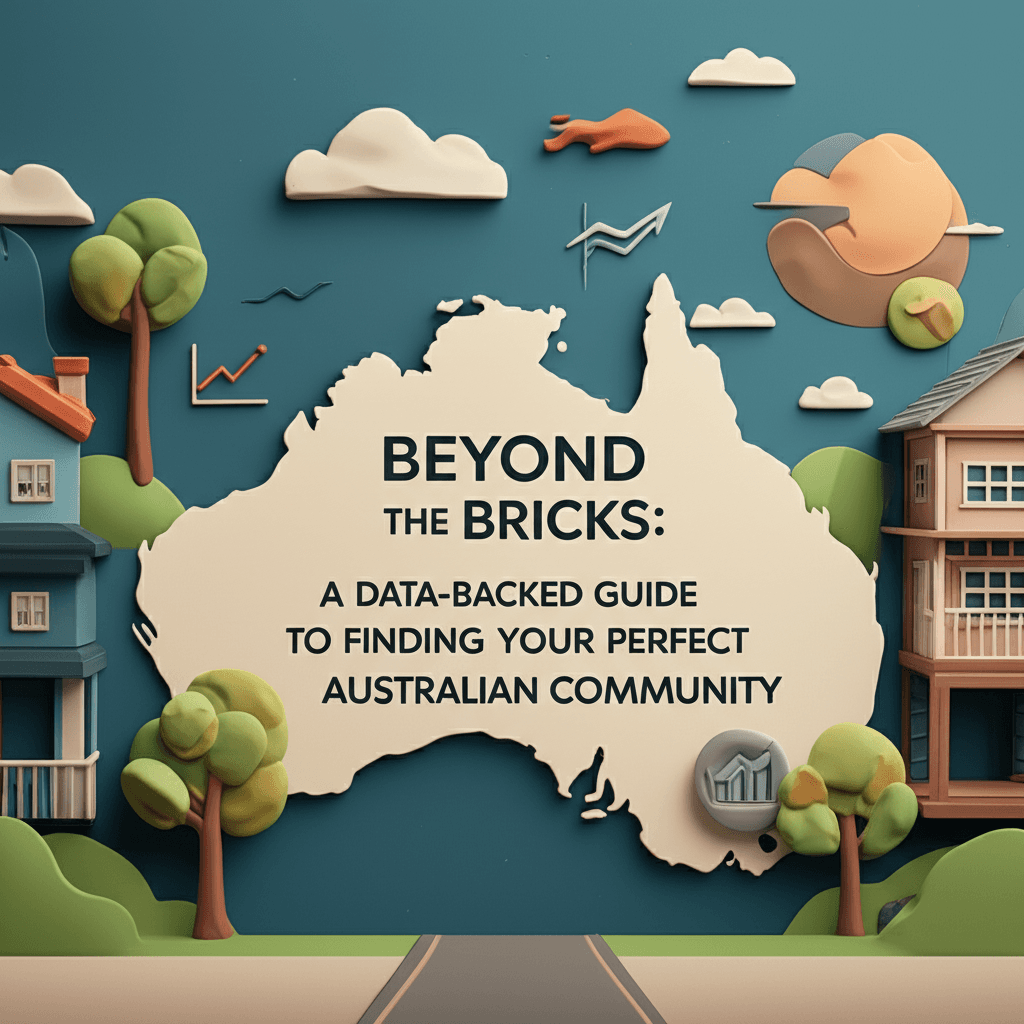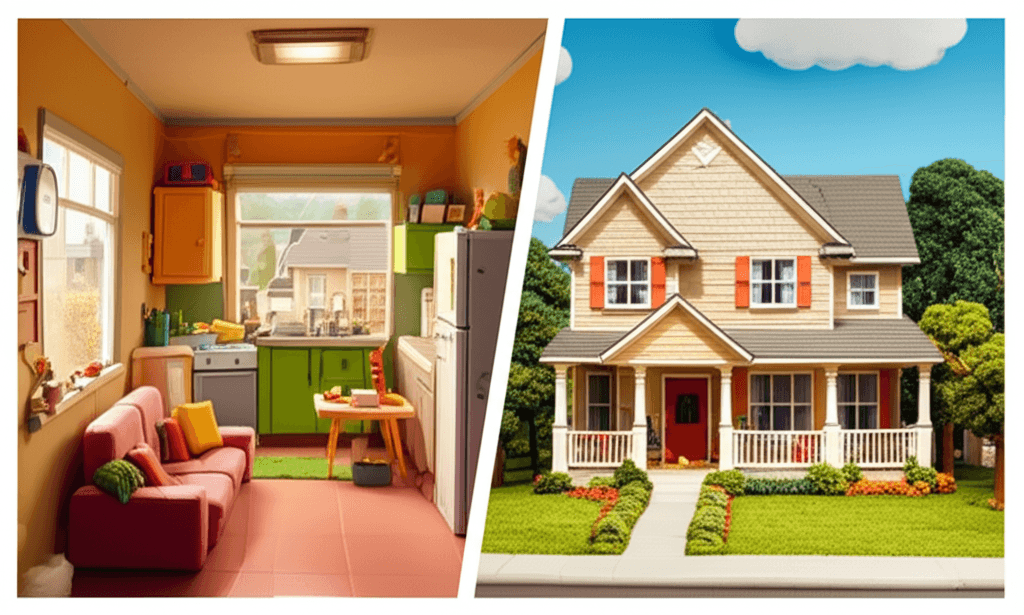Beyond the Bricks: A Data-Backed Guide to Finding Your Perfect Australian Community
Discover the key lifestyle factors, community amenities, and future-proof features that modern buyers are prioritising over just square footage.

The Great Australian Reset: Redefining the Dream Home
The classic Australian dream of a quarter-acre block is undergoing a significant transformation. Faced with a challenging housing market and evolving lifestyles, today's buyers are looking for more than just a physical house; they're searching for a community that supports their wellbeing, future aspirations, and day-to-day convenience. It's a mammoth effort for the average Aussie to enter the property market, with the time taken to save a deposit stretching over six years for a dual-income household. This financial pressure has sparked a 'suburban reset', forcing a re-evaluation of what truly makes a property the right fit.
The New Homebuyer Checklist: Space, Affordability, and Community
For many, the path to homeownership now leads away from the dense inner-city. First-home buyers, particularly young couples and families, are increasingly looking towards the outer suburbs and newly established communities. This move is driven by the pursuit of more space at a lower entry price point. Similarly, upgraders are swapping inner-city apartments for greenfield areas to gain the extra room they need. This migration highlights a crucial shift: the right location is defined less by its proximity to the CBD and more by its lifestyle attributes. Understanding these market trends is the first step to making a savvy purchase.

The Anatomy of a Thriving Community
So, what turns a collection of houses into a desirable, thriving community? Decades of data and resident feedback from 'livability surveys' point to several non-negotiable elements. Buyers are prioritising neighbourhoods that are thoughtfully planned with the following pillars in mind:
Safety and Belonging: A fundamental requirement is a sense of security. Well-lit streets, thoughtful design that encourages passive surveillance, and community events all contribute to this. When people feel connected to their neighbours, their overall happiness and wellbeing increase significantly.
Essential Amenities: Convenience is king. Easy access to retail for daily necessities, commercial hubs, and quality education are critical. A long commute for school drop-offs or a simple grocery run can quickly diminish the appeal of a new home.
Green Spaces: The positive impact of nature on mental and physical health is well-documented. Master-planned communities that integrate parks, walking trails, and green spaces within easy walking distance of homes are highly sought after.

Future-Proofing Your Purchase: Adaptability and Infrastructure
The typical Australian household is no longer a simple nuclear family. We're seeing a rise in single and two-person households, as well as a growing trend of multi-generational living. This demands a new level of flexibility in home design. Buyers are looking for adaptable floor plans that can accommodate a home office, a games room, or an additional adult living at home. This foresight extends beyond the property line. Astute buyers are also investigating the future of the suburb itself. Upcoming infrastructure projects—like new schools, transport links, or town centres—not only enhance livability but can also significantly add to a property's long-term value. Using powerful real estate analytics can help you identify suburbs with the highest growth potential.
A House Hunter's Action Plan
Finding a community that fits your lifestyle requires more than just online research. To make the right choice, you need to combine data with on-the-ground experience.
1. Become a 'Local for a Day': Spend significant time in the neighbourhoods you're considering. Visit at different times of the day and week. Grab a coffee at the local cafe, walk through the parks, and observe the community vibe. Can you genuinely picture yourself living there? 2. Think About Your Future Self: Consider your lifestyle not just for today, but for the next five to ten years. Will you be starting a family? Working from home more often? Will you need access to specific schools or childcare? Choosing a community that can adapt with you is crucial. 3. Investigate the Pipeline: Look beyond what exists today and research what's planned for tomorrow. Council development plans and infrastructure announcements are valuable sources of information that can signal future growth and improved amenity.
Conclusion: Finding Where You Belong
In today's complex property market, the search for a home has evolved into a search for a community. The best investment is a property that meets your financial goals while also supporting your desired lifestyle. It's about finding a place with the right blend of security, convenience, green space, and future potential. By looking beyond the physical bricks and mortar, you can find a place where you and your family will not just live, but truly thrive.
Ready to find a home that fits your life, not just your budget? Discover communities that match your unique lifestyle with HouseSeeker's AI Property Search. Tell us what you're looking for—from 'close to good schools and parks' to 'a quiet street with a home office'—and let our AI do the heavy lifting.
Frequently Asked Questions
What are the most important amenities to look for in a new community?
Based on buyer data and satisfaction surveys, the three most critical amenities are access to education (childcare and schools), retail (from local shops to larger shopping centres), and public green spaces (like parks and nature trails). These factors consistently rank as top drivers of livability and long-term resident happiness.
How is the Australian household changing and how does that affect property choice?
The traditional 'nuclear family' household is now less common than single or two-person households. There is also a growing trend of multi-generational families living together. This means property buyers are increasingly looking for flexible and adaptable homes with floor plans that can accommodate home offices, separate living zones, or extra bedrooms with ensuites to suit changing needs over time.
Is it better to buy in an established suburb or a new development?
Both have their advantages. Established suburbs offer mature infrastructure and a known character. However, new developments often provide an opportunity to buy in at a more affordable entry price, especially in the early stages. These communities are master-planned with modern lifestyles in mind, and buyers who get in early can benefit from significant equity growth as the community is built out and amenities are completed.
